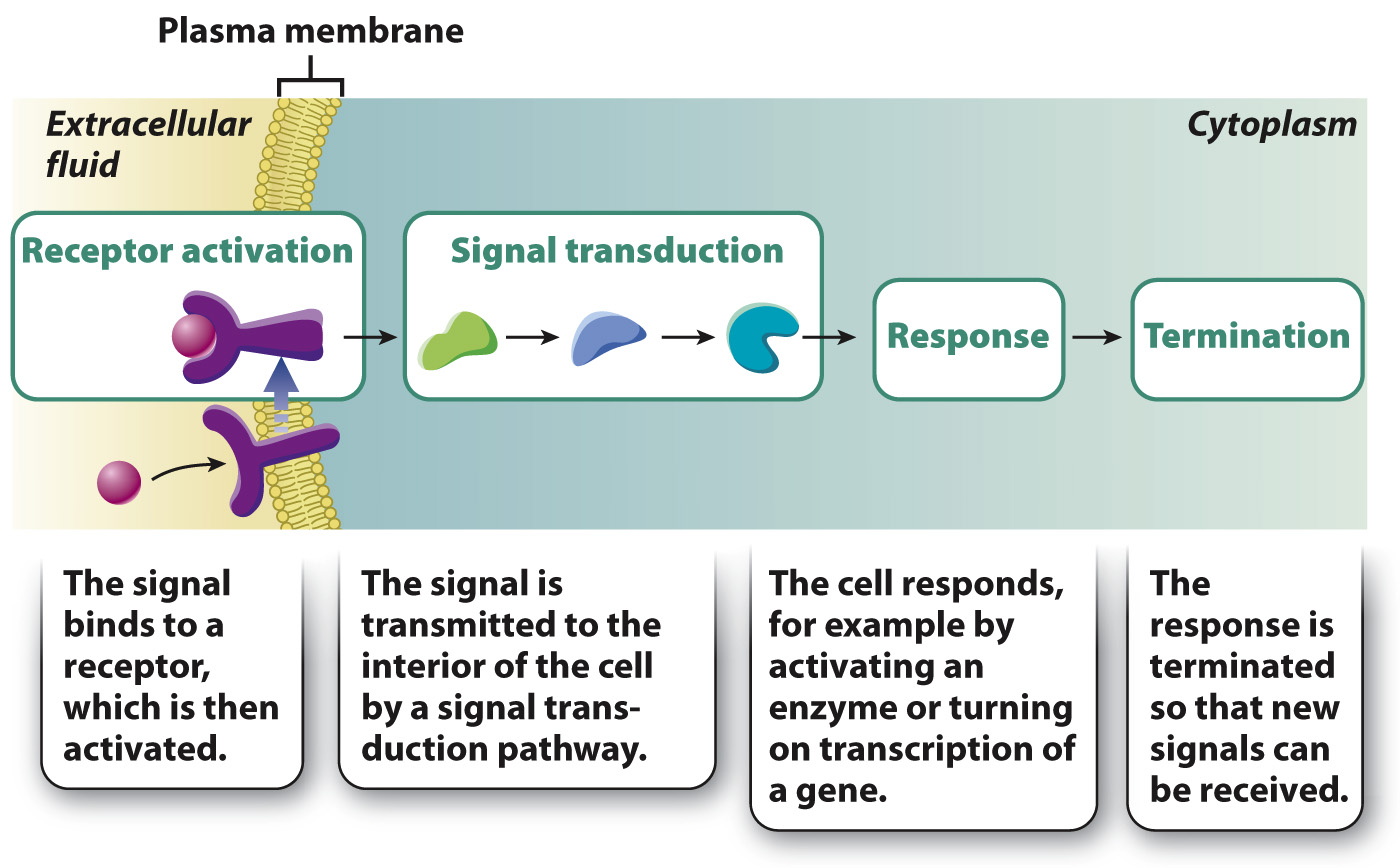Signaling involves receptor activation, signal transduction, response, and termination.
What happens when a signaling molecule binds to a receptor on a responding cell? The first step is receptor activation. On binding the signal, the receptor is turned on, or activated (Fig. 9.3). The signal usually activates the receptor by causing a conformational change in the receptor. As a result, some receptors bind to and activate other proteins located inside the cell. Other receptors are themselves enzymes, and binding of the signal changes the shape and activity of the enzyme. Still other receptors are channels that open or close in response to binding a signaling molecule.

182
Once activated, the receptor often triggers a series of downstream events in a process called signal transduction. During signal transduction, one molecule activates the next molecule, which activates the next, and so on. In this way, signal transduction can be thought of as a chain reaction or cascade of biochemical events set off by the binding and activation of the receptor. An important aspect of signal transduction is that the signal is often amplified at each step in the pathway. As a result, a low signal concentration can have a large effect on the responding cell.
Next, there is a cellular response, which can take different forms depending on the nature of the signal and the type of responding cell. For example, signaling pathways can activate enzymes involved in metabolic pathways, or turn on genes that cause the cell to divide, change shape, or signal other cells.
The last step is termination, in which the cellular response is stopped. The response can be terminated at any point along the signaling pathway. Termination protects the cell from overreacting to existing signals and therefore helps the cell to have an appropriate level of response. It also allows the cell to respond to new signals.
In the case of pneumococcal cells, the peptide binds to and activates a receptor on the cell surface. When enough receptors are bound by the signaling molecule, the message is relayed by signal transduction pathways to the nucleoid. There, genes are turned on that express proteins involved in DNA uptake from the environment. Eventually, when the density of bacteria is low, the initiating signal falls below a critical threshold and gene expression is turned back off.
This example is relatively simple. Remarkably, however, other more complex signaling pathways in a wide range of organisms involve the same four elements and steps, and in many cases involve similar signaling molecules, receptors, and signal transduction systems that have been evolutionarily conserved over long periods of time.